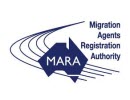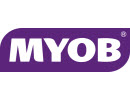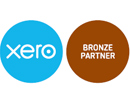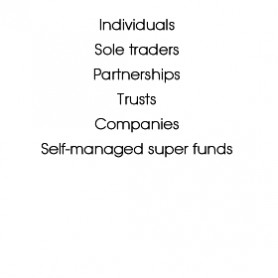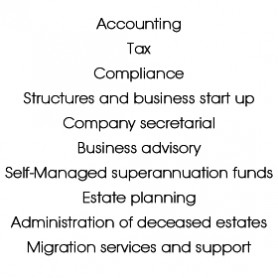The second JobKeeper extension period started on 4 January 2021 and covers the JobKeeper fortnights from 4 January 2021 to 28 March 2021. It’s timely for each business to assess their eligibility.
Decline in Turnover Test
In order to qualify for the second extension period an entity will need to satisfy a new actual decline in turnover test.
The testing period under the decline in turnover test for this second extension period is the quarter ended 31 December 2020.
To be eligible, the actual GST turnover must have declined by the required percentage relative to the same quarter in 2019. It is possible to satisfy the decline in turnover test for the second extension period and become eligible to receive JobKeeper payments in extension period 2 even where the decline in turnover test for the first extension period was not satisfied. Any entities enrolling in JobKeeper for the first time will need to complete the online enrolment and confirm they have satisfied the decline in turnover test by 31st January 2021.
The required percentages remain the same as under the original JobKeeper scheme and the first extension period test being 50% for entities with an “aggregated turnover” over $1 billion, 30% for entities with an aggregated turnover of up to $1 billion and 15% for ACNC registered charities.
It is important to note that regardless of whether an entity reports for GST on a monthly, quarterly or annual basis, the test period for the second extension period is the quarter ended 31 December 2020.
In order to claim JobKeeper for the second extension period an entity must confirm that the actual decline in turnover test has been satisfied. Where the entity is registered for GST the information is prefilled from the Business Activity Statements lodged with the ATO. It is therefore essential that activity statements for the December 2020 quarter are lodged in a timely manner.
Alternative Turnover Tests
Alternative Decline in Turnover Test rules continue to be available in some circumstances. There are seven classes of entities that are eligible to apply an alternative test relevant to their circumstances. Those classes of entities are:
- New businesses
- Businesses which experienced a substantial increase in turnover prior to 1 March 2020
- Businesses with irregular turnover
- Businesses affected by drought or natural disaster
- Businesses where an acquisition or disposal substantially changed the turnover
- Businesses which have undergone a restructure which changed the turnover
- Sole traders or small partnerships with sickness, injury or leave
The alternative test provided for each class of entity allows that entity to compare its current GST turnover with an appropriate turnover test period which is not the corresponding period in the 2019 year. The appropriate turnover test period for use by each class of eligible entity is specified in the rules.
Where an entity applies an alternative test in order to satisfy the actual decline in turnover test the ATO must be notified that an alternative test has been used.
Eligible Employees and Eligible Business Participants
There have been no changes to the eligibility criteria for business participants. An eligible business participant of a partnership, trust or company is an individual who is “actively engaged” in the operation of the business and is not an employee of the business. There can only be one eligible business participant for each entity. An eligible business participant must be one of the following:
- An individual partner in the partnership
- An adult beneficiary of the trust
- A shareholder or a director of a company
Both eligible employees and eligible business participants must be:
- At least 18 years old. An individual who is 16 or 17 can qualify if they’re independent and not studying full time
- An Australian resident or the holder of a Subclass 444 visa
- Not receiving government parental leave or Dad and Partner Pay
- Not receiving payments under workers compensation law in respect of total incapacity to work
- Not a nominated employee of another business
Two Payment Tiers
A two-tiered system continues to apply with the rate of JobKeeper received being based on the average number of hours and eligible employee worked, or an eligible business participant was “actively engaged” in the business during a four week reference period. The reference period is the four weeks ending at the conclusion of the most recent pay cycle that ended on or before 1 March 2020 or 1 July 2020. The tier 1 rate will apply to eligible employees who worked for 80 hours or more during either reference period and employers must choose the most beneficial reference period for each employee.
Eligible business participants have a single reference period which is the month of February 2020. In order to be eligible for the tier 1 rate, eligible business participants must have been actively engaged in the business for more than 80 hours during February and must provide a declaration to that effect.
The payment rates for the second JobKeeper extension period are:
Tier 1 $1,000 per fortnight
Tier 2 $650 per fortnight
The ability to apply an alternative reference period continues in situations where:
- The reference period is not representative of the hours in a typical 28 day period
- An employee was not employed or a business participant was not in business during part of the reference period
- An employee was employed before 1 March or 1 July but the first pay cycle ended after 1 March or 1 July
- The business changed hands during the reference period, or
- An entity conducted a business in a declared drought zone or declared natural disaster zone during February 2020
Employers will need to determine whether the tier 1 or tier 2 rate applies to each eligible employee and notify both the ATO and the employees which payment rate applies. Employers will need to ensure that each eligible employee continues to be paid, at a minimum, the applicable JobKeeper amount for the nominated payment tier. For the JobKeeper fortnight ended 17 January 2021 this condition will be satisfied where the payment is made to the employee by 31 January 2021.
The identification and notification of the applicable payment tier for each employee is only made once. For any business that was eligible to receive JobKeeper in relation to the first extension period, the notifications made during that period continue to apply. For any businesses enrolling for the first time under the two-tiered payment system, the entity will not be eligible to receive JobKeeper payments until valid notifications have been made in respect of all eligible employees.
JobKeeper Fortnight 20 (ended 3 January 2021)
While the general rule is that a monthly business declaration must be lodged following the end of each month to claim JobKeeper payments in respect of fortnights that ended during that month, the fortnight ended 3 January 2021 forms part of the monthly reporting for December 2020. This is because the payment rates for this fortnight are the higher rates which applied for the first JobKeeper extension period being $1,200 per fortnight for those entitled to the tier 1 rate and $750 per fortnight for those entitled to the lower tier 2 rate.

